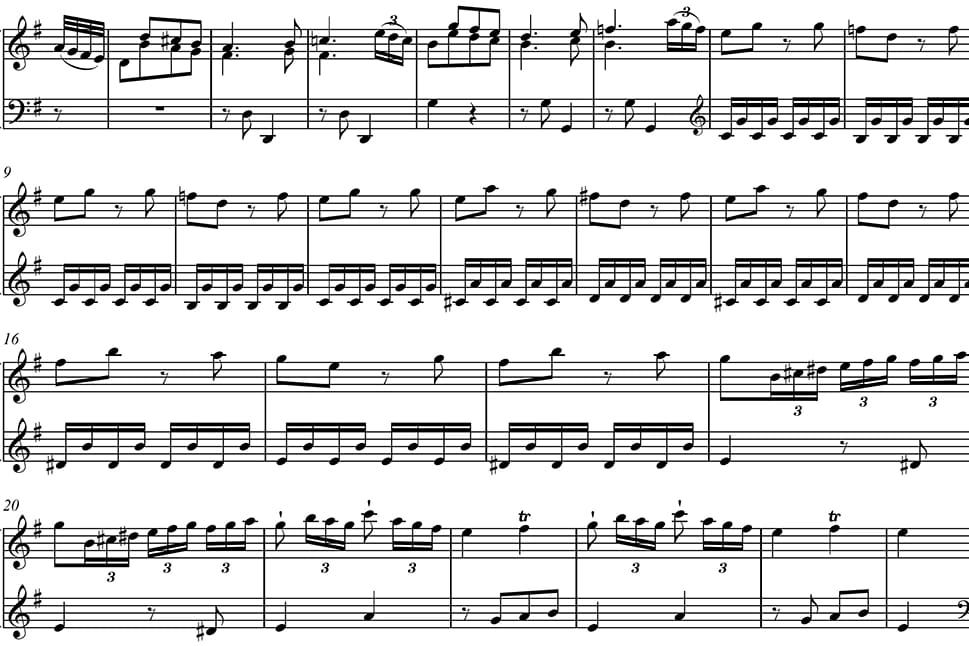 A section of Haydn’s Sonata in G Major
A section of Haydn’s Sonata in G Major
KUSC’s Alan Chapman has a lot to say about music, but can he say it in 60 seconds? That’s the Chapman Challenge. We ask a question and Alan has a minute to answer it.
Today’s question is from Maria in Santa Barbara who wants to know “What exactly is a sonata?”
Hit play below to listen to this week’s Chapman Challenge on Arts Alive.
The word sonata comes from the Italian verb “suonare” (to sound) and you can find it being used as early as the thirteenth century. It came into general use toward the end of the sixteenth century, around the time Giovanni Gabrieli wrote his Sonata pian’ e forte, the “soft and loud” sonata.
Sonata started out simply as a designation for an instrumental piece, but it came to mean more specifically an instrumental piece in several movements for a soloist or a small ensemble. The Baroque period gave us the trio sonata. This is by Bach:
In the Classical period, you could count on the first movement of a sonata (and often other movements) having a certain structure in which harmonic relations play a significant role.
In the nineteenth century this structure became known as “sonata form.” I could tell you plenty about that, but not in what’s left of my sixty seconds.
That’s today’s Chapman Challenge. Is there a question you’d like to have answered in 60 seconds? Send it to us at [email protected].







